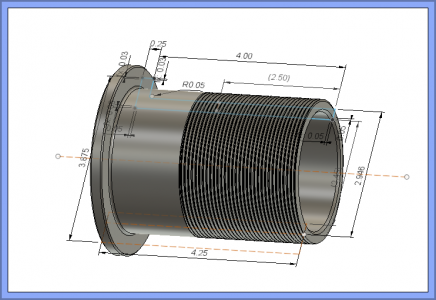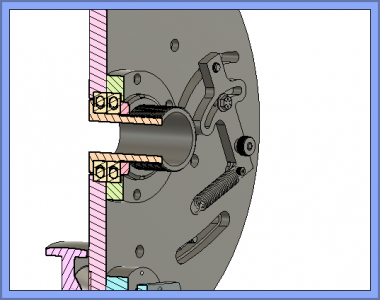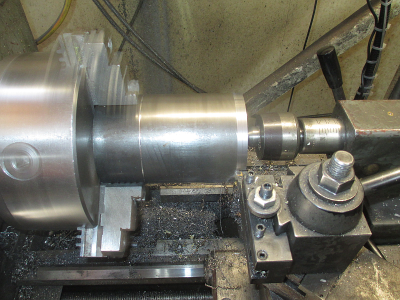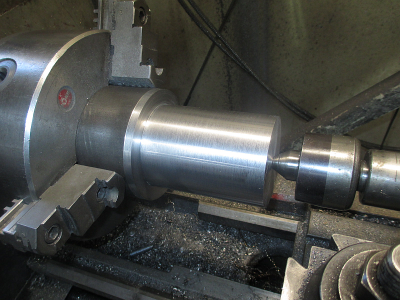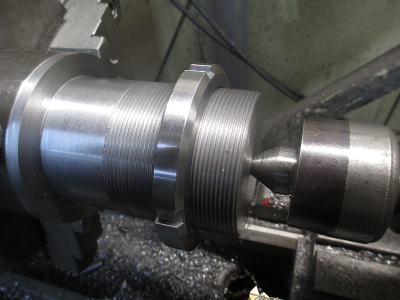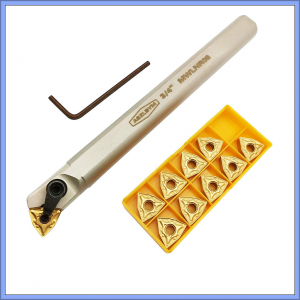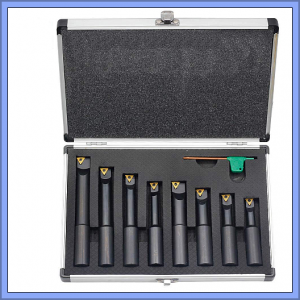- Joined
- Feb 8, 2014
- Messages
- 11,144
I got a bit more done on the tube polisher today. The belt drive wheel shafts.
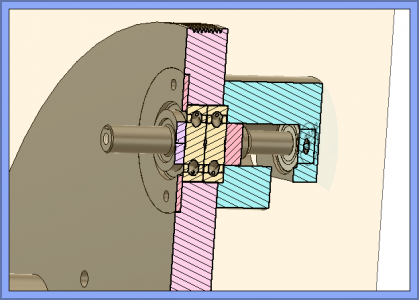
These are about 5'; long, and the raw material is 1.5 diameter 1018 steel. I had some 1 7/8 shafting in the shelf so I decided to use that. The biggest collet I have for the lathe is 1.5'' so I had to turn the 1 7/8 down to 1.5 on my manual lathe.
This was made in two operations, the gray outline on the right side of the picture, then flip it over and use a 1'' collet and machine the left side in the second operation.
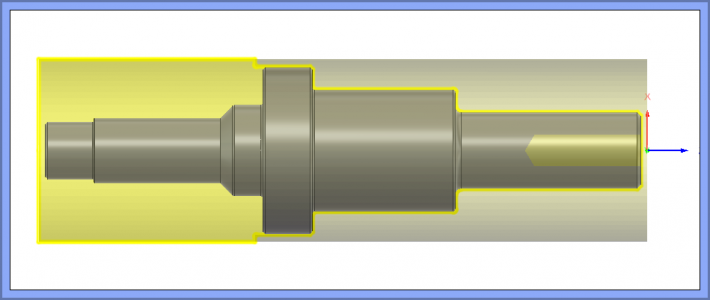
I was going to do these in the manual lathe, but the CNC lathe was just sitting there doing nothing and I had the needed collets. Besides, using the CNC will make both parts exactly the same, and make even me look like a machinist. Honestly, I have never claimed to be a machinist, I really don't enjoy making chips. I'm a problem solver who sometimes uses machine tools to facilitate providing a solution.
Honestly, I have never claimed to be a machinist, I really don't enjoy making chips. I'm a problem solver who sometimes uses machine tools to facilitate providing a solution.
To keep the Z 0 in the same place for both parts, I set up the collet stop. This also required that I face the raw blanks to the same length, I did that in the manual lathe.
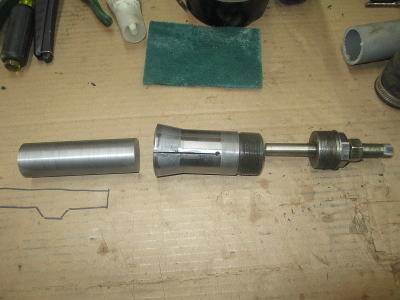
And set with about 3.375'' sticking out of the collet. This will give me about 0.100'' tool clearance from the collet.
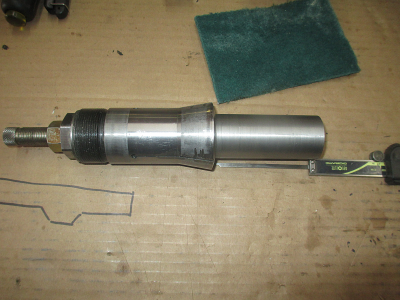
Tool clearance at minimum Z travel
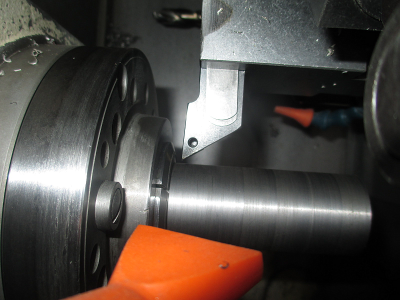
It took me about 45 minutes to set up for the first cut and get it dialed in. Then 6:45 to turn the first end. All I had to do for the second part was to put the raw stock in and press Go. 6:45 later I had the first end completed on both parts. I don't care how good the setup is, or how stable the machine is, cold rolled shafting always comes out looking like crap. The surface on the left was just rough turned at 160 FPM on the manual lathe without coolant, and the right side was turned on the CNC at 300 FPM and flood coolant. The surface finish looks the same.
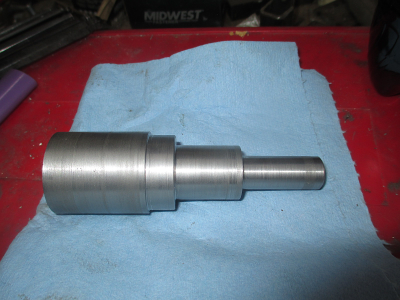
It took me about 5 minutes to change the collet and setup for the other end, and about 4:45 to run the part. Just needed to move the collet stop to the 1'' collet and reset the Z 0 position.
And two nearly identical shafts, and didn't have to stand over my Jet lathe for 3 hours to make these.
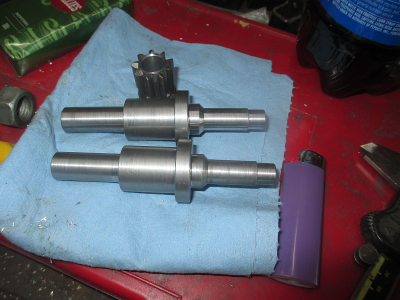
With the gear in place.
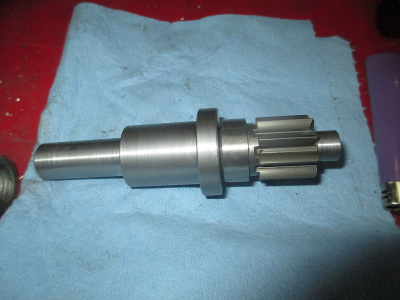
Now I only need to drill & tap the end, 1/4-20, and cut the keyway.

These are about 5'; long, and the raw material is 1.5 diameter 1018 steel. I had some 1 7/8 shafting in the shelf so I decided to use that. The biggest collet I have for the lathe is 1.5'' so I had to turn the 1 7/8 down to 1.5 on my manual lathe.
This was made in two operations, the gray outline on the right side of the picture, then flip it over and use a 1'' collet and machine the left side in the second operation.

I was going to do these in the manual lathe, but the CNC lathe was just sitting there doing nothing and I had the needed collets. Besides, using the CNC will make both parts exactly the same, and make even me look like a machinist.
To keep the Z 0 in the same place for both parts, I set up the collet stop. This also required that I face the raw blanks to the same length, I did that in the manual lathe.

And set with about 3.375'' sticking out of the collet. This will give me about 0.100'' tool clearance from the collet.

Tool clearance at minimum Z travel

It took me about 45 minutes to set up for the first cut and get it dialed in. Then 6:45 to turn the first end. All I had to do for the second part was to put the raw stock in and press Go. 6:45 later I had the first end completed on both parts. I don't care how good the setup is, or how stable the machine is, cold rolled shafting always comes out looking like crap. The surface on the left was just rough turned at 160 FPM on the manual lathe without coolant, and the right side was turned on the CNC at 300 FPM and flood coolant. The surface finish looks the same.

It took me about 5 minutes to change the collet and setup for the other end, and about 4:45 to run the part. Just needed to move the collet stop to the 1'' collet and reset the Z 0 position.
And two nearly identical shafts, and didn't have to stand over my Jet lathe for 3 hours to make these.

With the gear in place.

Now I only need to drill & tap the end, 1/4-20, and cut the keyway.
Last edited:


